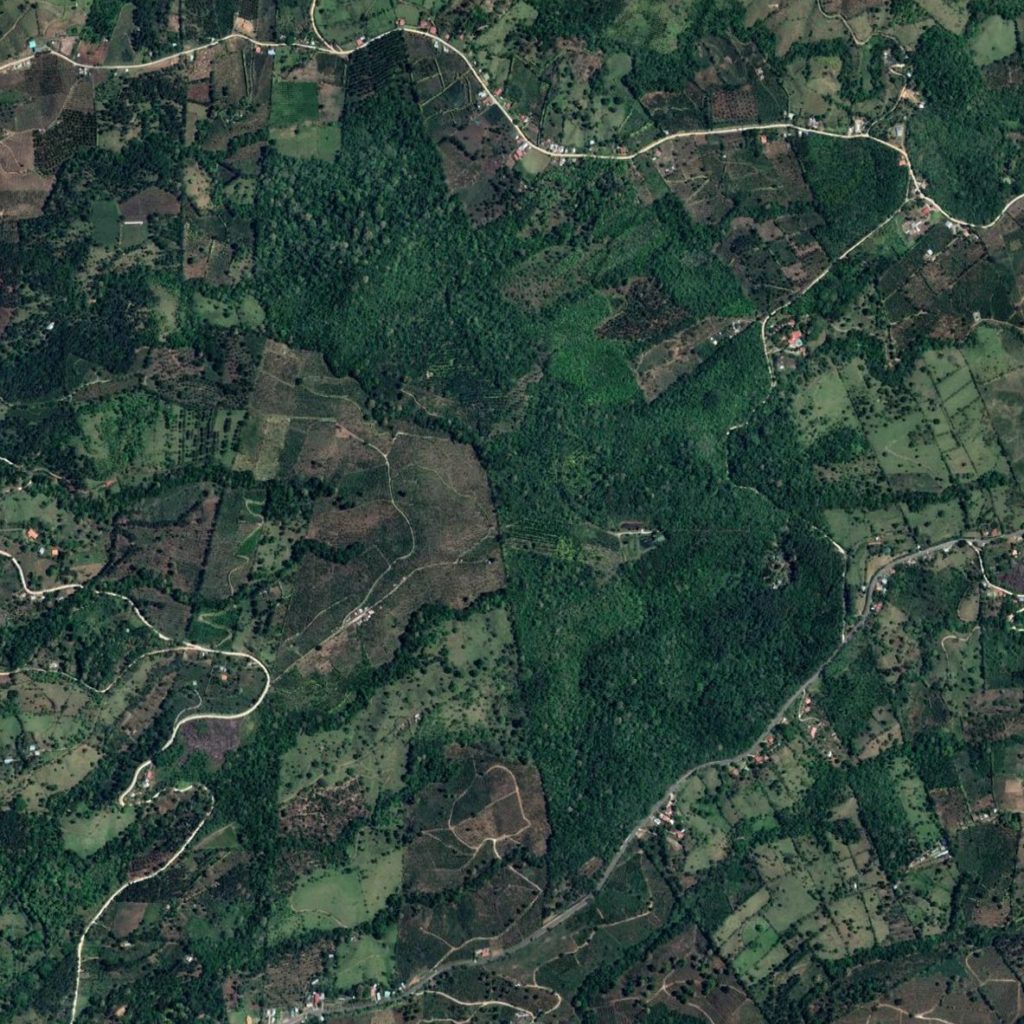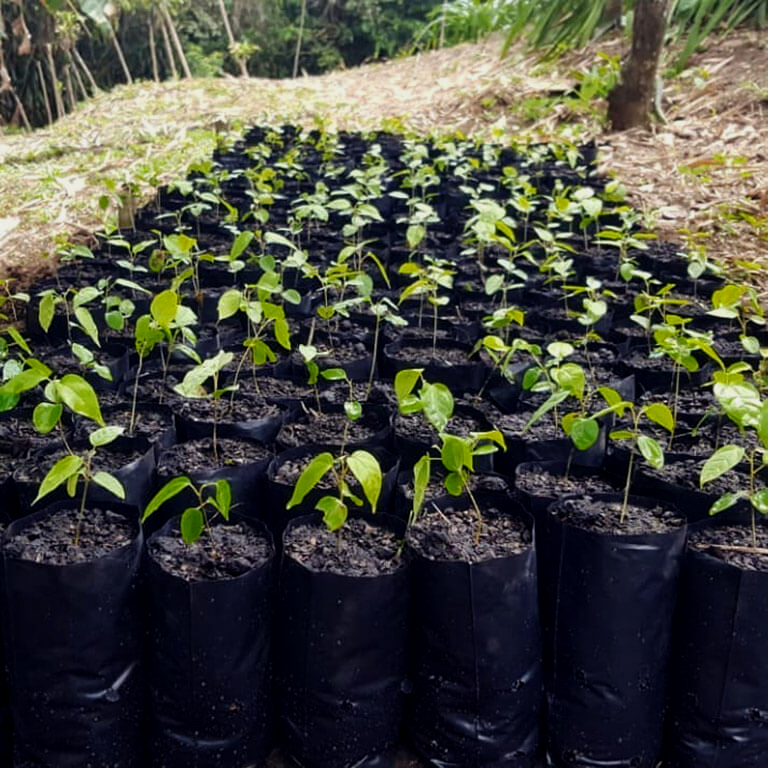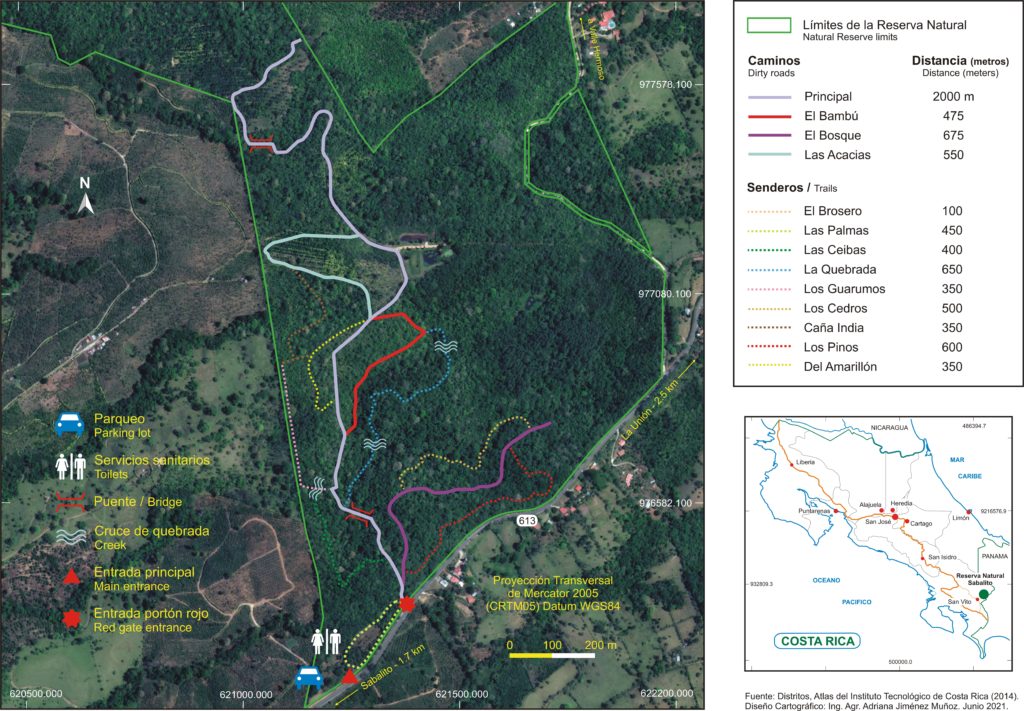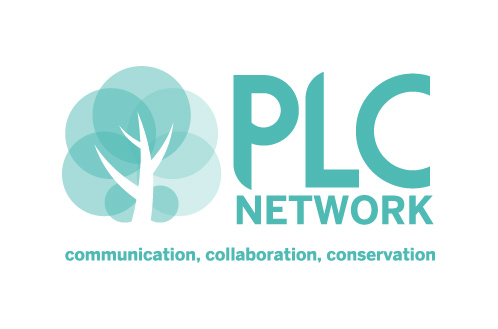Projects
The reserve serves as a laboratory for conservation projects, including support for scientific research, in collaboration with related organizations and academic institutions and local communities. Emphasis is placed on integrative aspects, for example, contributions of the reserve as a biological corridor, as well as research on ecosystem recovery processes.
Given the Reserve’s proximity to urbanized areas, communal benefit is a primary consideration and the idea of a walled garden would be out of place. Therefore, the Reserve is open to community benefit activities and outreach activities aligned with conservation objectives.
Reforestation projects
Traditional agricultural activities were suspended in the 1980s, with a decision to leave the areas with primary forest in their pristine state, and with the objective of recovering areas of secondary forest, reforesting with pines and other local species such as yellow or coral oak (Terminalia amazonia). Other areas have been left untouched to recover naturally.
The idea began to materialize with financial support from the reforestation programs of the Ministry of Agriculture in 1980, gaining momentum with the Payment for Environmental Services (PSA) program of the National Fund for Forest Financing (FONAFIFO). Even though state aid represents an important contribution to cover current operations, planning internalizes the temporal aspects of state aid.
In 2015, in the Municipality of Coto Brus, 70 hectares were reported as forest protected by FONAFIFO, 30 hectares in reforestation of pine (Pinus caribaea) and yellow oak (Terminalia amazonia) and 30 hectares as annual cultivars.
In 2018, reforestation began in the areas of annual crops with may trees (Vochysia ferruginea), acacia (acacia mangium), cocoa (Theobroma cacao) and cedar walnut (Juglans neotropica) mainly.
Starting in 2020, the planting of many more trees continues, promoting native species that provide food and shelter for the existing fauna.
Academic projects
Currently, the Reserve sponsors several research projects that are underway.
A study already completed is a report on the use of coffee chaff as an adjuvant to accelerate the recovery of soils in proto-forests, written by: Rebecca Cole & Rakan A. Zahawi from the University of Hawai’i at Manoa, Honolulu, USA . Published on March 28, 2021
trails & Interpretative signs
In 2020, in collaboration with the local firm Green Sense, a project was started to lay out and signpost a series of trails for group visitors and self-guided visitors in the southern sector of the reserve, adjacent to Highway 613.
Private Land Conservation Network
In 2021, PLC Network invited us to be members of the international conservation community. The stories of the reserves and conservation projects are shared in their networks, thus showing the tangible and intangible social benefits.
AFFILIATION In Restor
The Sabalito Nature Reserve is part of the Restor project and online community, a scientific open data platform that provides support and connection to the global restoration movement.
actual activities
- Protection of the habitat to allow nature to reestablish native species, both flora and fauna. For example, the original old trees are now supplemented by younger trees of the same species that have been established during the nearly 40 years of the project. Significant returns have been observed in the number of bird species and small fauna.
- Research projects with universities and academic consortia, sponsorship of visiting staff for use of the property for research, including postgraduate projects.
- Community outreach. Trails have been constructed for limited access to some areas for registered visitors for tours and activities consistent with the property’s conservation objectives.
- Extension projects to other conservation organizations, both local and international, in order to identify synergies, coordination of activities and scale of conservation efforts.
- Training and laboratory for the facilitation of the next generation of conservation leaders, including personnel dedicated to climate change mitigation. Participation is inclusive, from elementary school projects to postgraduate research, as well as participation in national and international initiatives





